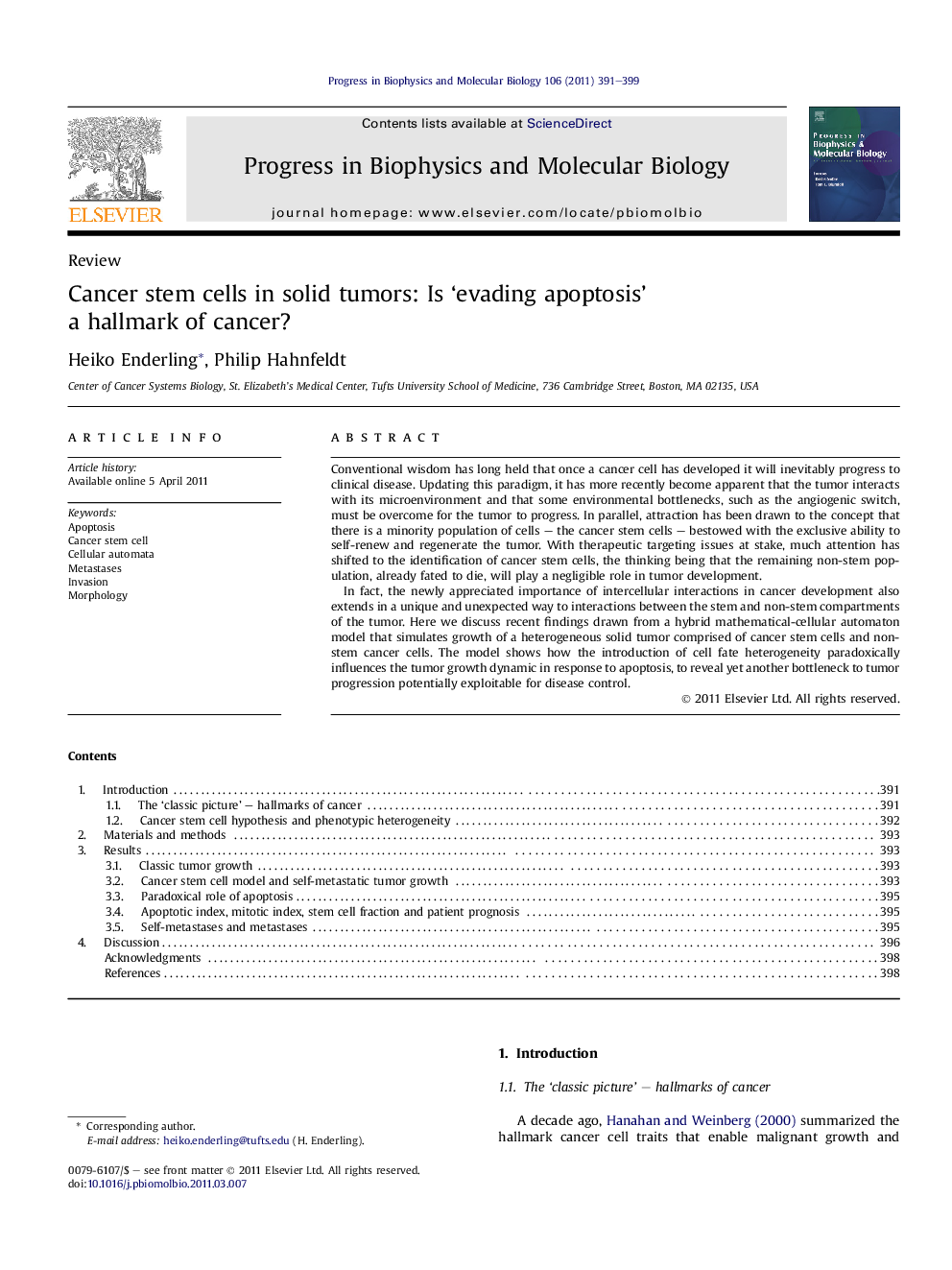| Article ID | Journal | Published Year | Pages | File Type |
|---|---|---|---|---|
| 2070268 | Progress in Biophysics and Molecular Biology | 2011 | 9 Pages |
Conventional wisdom has long held that once a cancer cell has developed it will inevitably progress to clinical disease. Updating this paradigm, it has more recently become apparent that the tumor interacts with its microenvironment and that some environmental bottlenecks, such as the angiogenic switch, must be overcome for the tumor to progress. In parallel, attraction has been drawn to the concept that there is a minority population of cells – the cancer stem cells – bestowed with the exclusive ability to self-renew and regenerate the tumor. With therapeutic targeting issues at stake, much attention has shifted to the identification of cancer stem cells, the thinking being that the remaining non-stem population, already fated to die, will play a negligible role in tumor development.In fact, the newly appreciated importance of intercellular interactions in cancer development also extends in a unique and unexpected way to interactions between the stem and non-stem compartments of the tumor. Here we discuss recent findings drawn from a hybrid mathematical-cellular automaton model that simulates growth of a heterogeneous solid tumor comprised of cancer stem cells and non-stem cancer cells. The model shows how the introduction of cell fate heterogeneity paradoxically influences the tumor growth dynamic in response to apoptosis, to reveal yet another bottleneck to tumor progression potentially exploitable for disease control.
